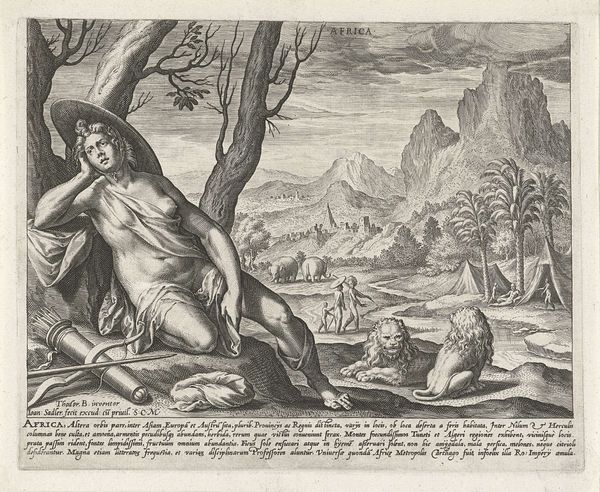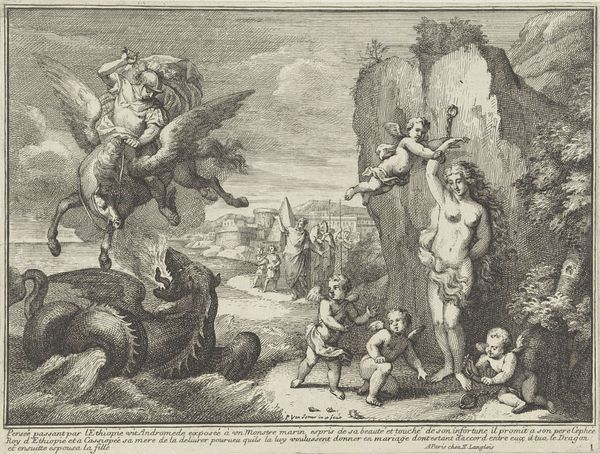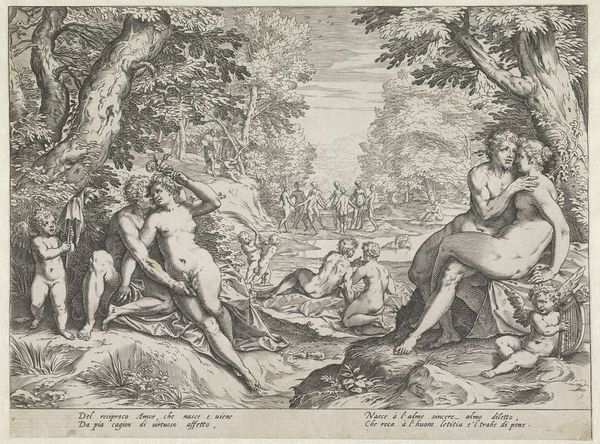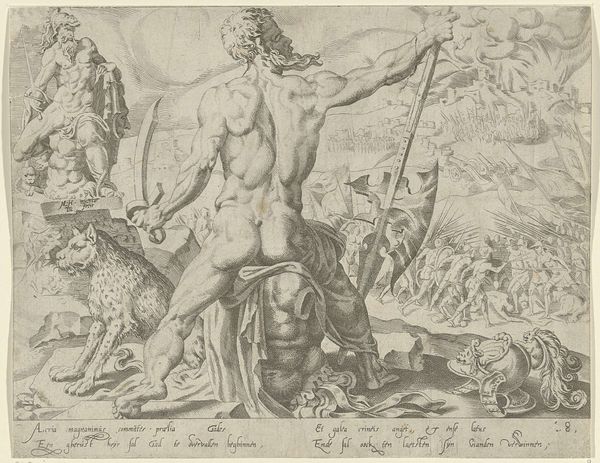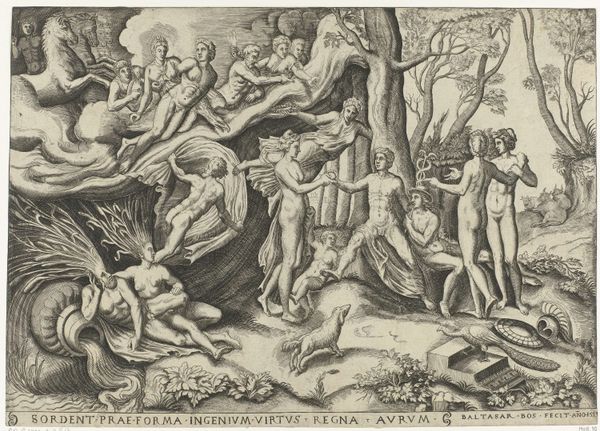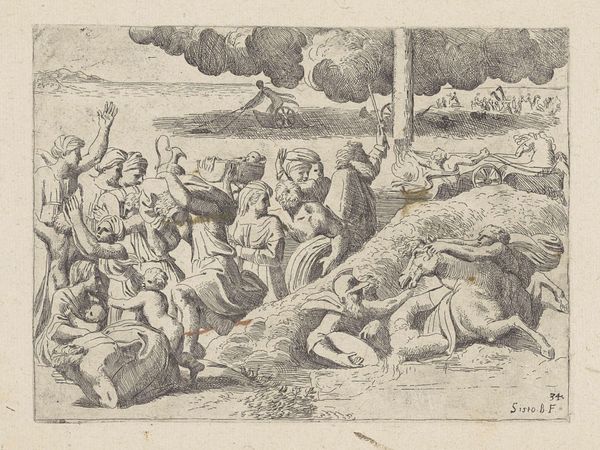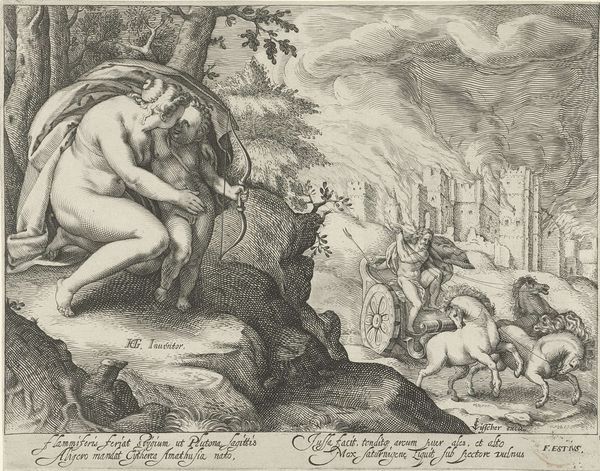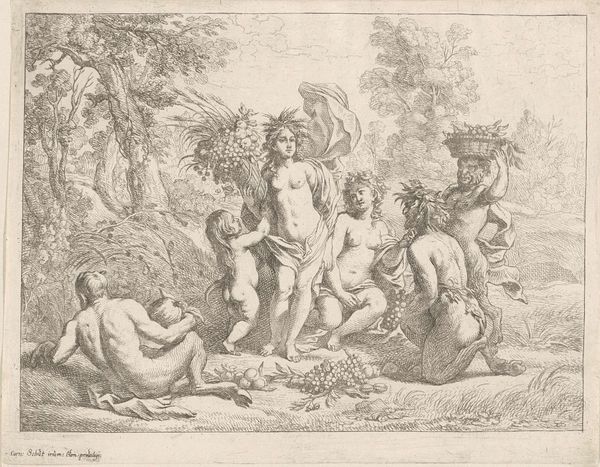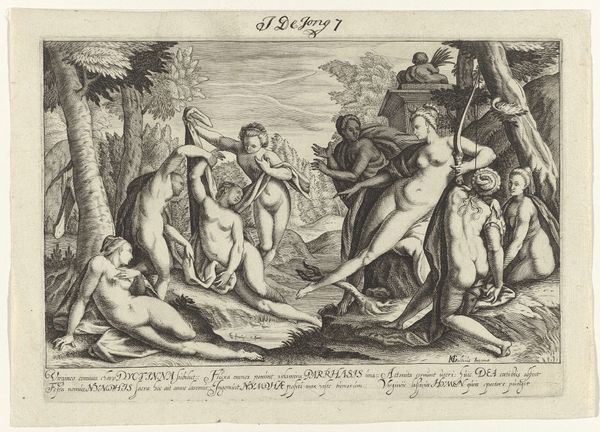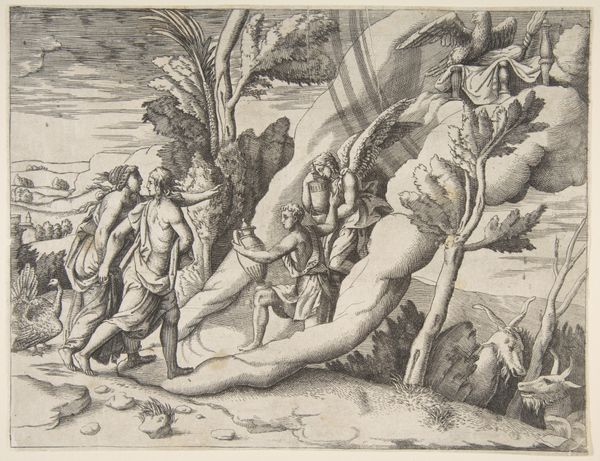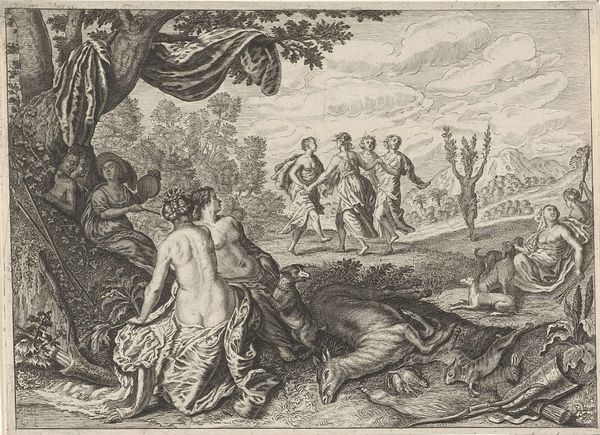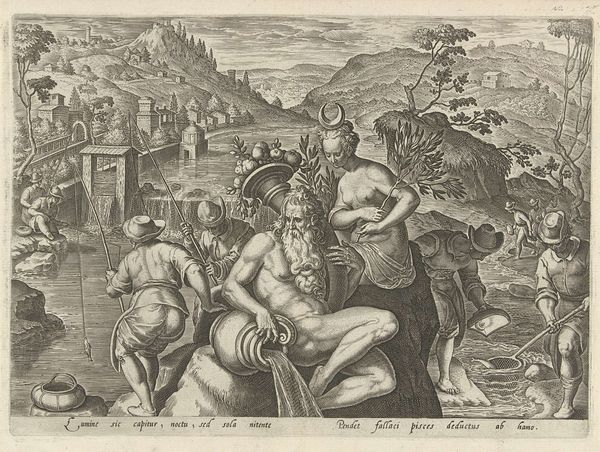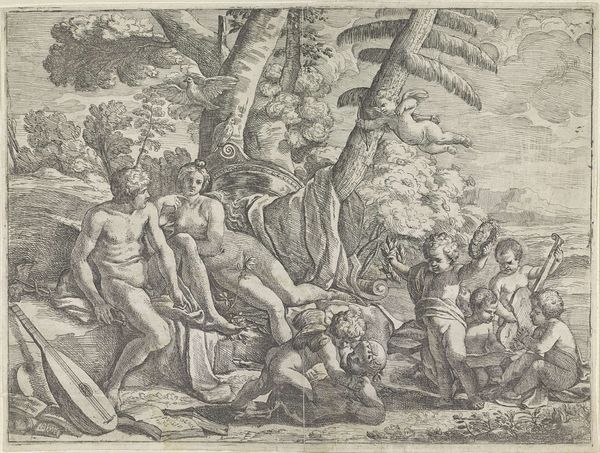
print, intaglio, pen, engraving
#
allegory
#
narrative-art
# print
#
pen illustration
#
pen sketch
#
intaglio
#
pencil sketch
#
old engraving style
#
landscape
#
mannerism
#
figuration
#
geometric
#
pen-ink sketch
#
pen work
#
sketchbook drawing
#
pen
#
history-painting
#
engraving
Dimensions: height 216 mm, width 292 mm
Copyright: Rijks Museum: Open Domain
Editor: Here we have Philips Galle's "Nachtelijk vissen met hamer en schepnet" from 1578, housed at the Rijksmuseum. It’s an intaglio print teeming with figures in a landscape, an odd scene. I'm particularly struck by the contrast between the industrious fishing and the reclining figures in the foreground. How would you interpret this engraving? Curator: It's interesting to consider this print through the lens of labor and its representation. Notice the varying activities. We see figures actively hammering rocks in the water, while others use nets. Consider this labor, these ‘means of production’ are contrasted against the leisure of the reclining figures. This highlights not just the act of fishing but the *how* - the materials used, the process itself. Does that shift how you perceive it? Editor: Yes, that's fascinating. I hadn't focused on the labor itself, only the activity. It’s more like the *evidence* of the labor and the materials –the hammers, nets– are as important as the allegory it conveys. Curator: Exactly! Galle isn't just depicting a scene, he's showing us a system of production. Think about who this print was made *for*. Was it for the laborers depicted or the elites who consumed images of labor? What do you make of the seemingly haphazard, ‘uneven’ nature of the print itself? Editor: I guess the imperfections hint to a faster production process for mass consumption and thus profit. Considering its date, perhaps Galle meant this imagery to be easily reproducible so a greater market could consume it. So, he may not have seen it as fine art necessarily? Curator: Precisely. And understanding the economics of printmaking helps us to challenge the art/craft divide of the time. The labor of creation and means of circulation and consumption mattered! Editor: I’ve definitely never considered the material realities of printmaking quite this deeply, but I will from now on.
Comments
No comments
Be the first to comment and join the conversation on the ultimate creative platform.
